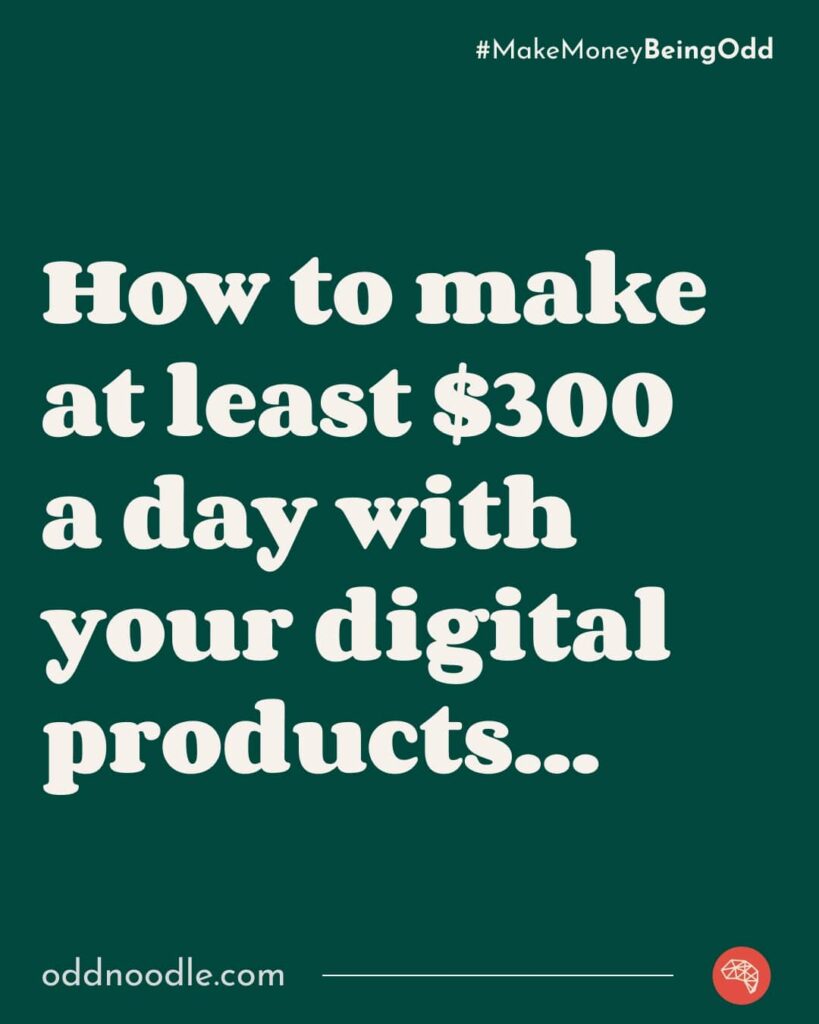In today’s rapidly evolving digital landscape, e-commerce has become a powerful avenue for creators and solopreneurs to showcase their talents and monetize their skills.
With the rise of digital products, individuals can now harness their expertise and creativity to reach a global audience, all from the comfort of their own homes.
This article will delve into the world of e-commerce success, focusing specifically on digital products and the opportunities they present for aspiring entrepreneurs.
The benefits of selling digital products are manifold, making them an attractive choice for individuals looking to establish a profitable online business. Unlike physical products, digital products do not require costly production or inventory management. This eliminates the need for physical storage space and reduces overhead expenses.

Additionally, digital products offer scalability, allowing creators to reach an unlimited number of customers without the constraints of physical distribution. Passive income potential is another enticing aspect of selling digital products. Once created, these products can be sold repeatedly, providing a steady stream of income with minimal ongoing effort.
Now that we have established the advantages of selling digital products, let us explore the various types available. From e-books and guides to online courses, stock photos and graphics to templates and themes, music and audio files to software and apps, the possibilities are vast. Each type of digital product caters to a unique set of customers, offering a diverse range of opportunities for creators and solopreneurs to showcase their talents.
Choosing the right digital product for your business requires careful consideration. It is essential to identify your target audience and understand their needs and preferences. Additionally, assessing your own skills and expertise will help you determine which type of digital product aligns best with your abilities. Researching market demand is crucial to ensure that there is a viable market for your chosen product. Finally, evaluating profitability is essential to guarantee a return on your investment of time and effort.
Once you have chosen the ideal digital product for your business, the next step is to create and sell it effectively. Content creation plays a pivotal role in delivering value to your customers. Whether it is writing engaging e-book chapters or producing high-quality video lessons, the quality of your content will determine the success of your product. Pricing strategies, too, must be carefully devised to strike a balance between profitability and customer appeal. Marketing and promotion are vital for reaching a wider audience and generating sales. Finally, ensuring smooth delivery and providing exceptional customer support will help you build a loyal customer base.
In conclusion, e-commerce success with digital products offers an unprecedented opportunity for creators and solopreneurs to explore their passions, share their knowledge, and generate income. By understanding the benefits of selling digital products, exploring the various types available, and implementing effective strategies for creation and sales, individuals can unlock the full potential of their talents in the digital marketplace.
Stay tuned for our upcoming articles, where we will delve deeper into topics such as digital product ideas and digital product creation, as well as provide insights on selling digital products on popular platforms like Shopify.
Benefits of Selling Digital Products
When it comes to e-commerce success, digital products are a game-changer for creators and solopreneurs. Not only do they offer a wide range of possibilities, but they also come with a plethora of benefits that can help boost your business to new heights. Let’s explore some of the key advantages of selling digital products.
Low Production Costs
One of the most significant advantages of selling digital products is the low production costs involved. Unlike physical products that require materials, manufacturing, and shipping, digital products can be created and distributed with minimal expenses. Whether you’re writing an e-book, designing online courses, or crafting templates and themes, the costs remain relatively low, allowing you to maximize your profit margins.
Scalability
Scalability is a crucial aspect of any successful business, and digital products excel in this area. Once you’ve created your digital product, whether it’s an e-book, an online course, or a piece of software, you can sell it an unlimited number of times without the need for additional production or inventory. This scalability allows you to reach a wider audience and increase your revenue without incurring extra costs.
Passive Income Potential
Imagine waking up in the morning, checking your email, and finding notifications of new sales while you were sleeping. This is the beauty of passive income, and digital products offer the perfect opportunity to generate it. Once you’ve created and launched your digital product, it can continue to generate sales and revenue without requiring your constant attention. This means you can earn money while focusing on other aspects of your business or even taking a well-deserved vacation.
The passive income potential of selling digital products is particularly attractive for those looking to create multiple income streams or achieve financial independence. By leveraging your expertise and creating valuable digital products, you can establish a sustainable source of income that works for you even when you’re not actively promoting or selling.
In the next section, we’ll explore the various types of digital products available to creators and solopreneurs, helping you identify the perfect fit for your business.
Continue reading: Types of Digital Products
Types of Digital Products
When it comes to e-commerce success, digital products are the way to go for creators and solopreneurs. With low production costs, scalability, and passive income potential, selling digital products has become a lucrative venture in today’s digital age. Let’s explore some of the most popular types of digital products that can help you unlock your e-commerce success.
E-books and Guides
E-books and guides are a fantastic way to share your knowledge and expertise with a wide audience. Whether you’re a writer, a coach, or an expert in a specific field, creating an e-book or guide allows you to package your insights into a comprehensive and valuable resource. From self-help guides to recipe books, the possibilities for e-books and guides are endless.
Online Courses
If you have specialized knowledge or skills, online courses are an excellent digital product to consider. With the rise of e-learning platforms, more and more people are seeking educational opportunities online. Creating an online course allows you to share your expertise in a structured and interactive format, providing value to your audience while generating income.
Stock Photos and Graphics
In the visually-driven world we live in, stock photos and graphics are in high demand. Whether it’s for websites, social media, or marketing materials, businesses and individuals are always searching for eye-catching visuals. If you have a knack for photography or graphic design, creating and selling stock photos and graphics can be a profitable digital product.
Templates and Themes
For those with design skills, templates and themes offer a great opportunity for digital product creation. From website templates to PowerPoint themes, there’s a market for ready-to-use design assets. Templates and themes save time and effort for individuals and businesses, making them a popular choice among those looking to enhance their online presence.
Music and Audio Files
If you’re musically inclined or have a talent for audio production, creating and selling music and audio files can be a rewarding venture. From royalty-free music for content creators to sound effects for video games, there’s a diverse range of opportunities in the audio industry. Consider catering to specific niches or genres to stand out in this competitive market.
Software and Apps
For tech-savvy individuals, software and apps provide a world of possibilities. Whether you’re skilled in coding or have a unique software idea, developing and selling software and apps can be highly profitable. From productivity tools to mobile applications, the digital landscape is constantly evolving, offering ample opportunities for digital product creators.
Now that you’re familiar with the various types of digital products available, you can start brainstorming ideas and exploring the ones that align with your skills and interests. Remember to consider your target audience, assess market demand, and evaluate profitability as you choose the right digital product for your e-commerce business.
*[SEO optimized]: Search Engine Optimization optimized
Choosing the Right Digital Product for Your Business
When it comes to selling digital products, choosing the right one for your business is an essential step towards e-commerce success. By selecting a digital product that aligns with your target audience, skills, market demand, and profitability, you can maximize your chances of creating a lucrative online venture. Let’s delve into the key factors to consider when making this crucial decision.
Identifying Your Target Audience
Before diving into the world of digital products, it’s crucial to identify your target audience. Understanding who your potential customers are will help you tailor your offerings to meet their specific needs and preferences. By knowing their demographics, interests, and pain points, you can create a digital product that provides value and resonates with them.
For instance, if you’re targeting busy professionals looking to enhance their skills, an online course or an e-book on career development or productivity hacks could be a great fit. On the other hand, if you’re catering to creative individuals, such as artists or photographers, offering stock photos, graphics, or templates could be more appealing. Remember, knowing your audience is the first step towards delivering a digital product that will captivate their interest.
Assessing Your Skills and Expertise
Another critical factor to consider is assessing your own skills and expertise. What are you knowledgeable about? What are your passions and strengths? By leveraging your existing skills, you can create a digital product that showcases your expertise and provides value to your customers.
For instance, if you have extensive experience in web development, creating and selling software or apps could be a natural fit. Similarly, if you have a flair for writing, crafting e-books or guides might be your forte. By capitalizing on your strengths, you can ensure that your digital product meets high standards and resonates with your audience.
Researching Market Demand
While it’s important to create a digital product that aligns with your skills and interests, it’s equally crucial to ensure that there is a market demand for it. Conducting thorough market research will help you uncover trends, identify gaps in the market, and determine the potential demand for your product.
Explore online forums, social media groups, and industry websites to gather insights into what your target audience is actively seeking. Pay attention to their pain points, desires, and challenges. This research will not only validate your product idea but also provide you with valuable information on how to position and market it effectively.
Evaluating Profitability
Lastly, evaluating the profitability of your digital product is essential for long-term success. While passion and creativity are crucial, you also need to ensure that your product can generate a sustainable income. Consider factors such as production costs, pricing potential, and potential competition within your niche.
Understanding the pricing strategies of similar products in the market will help you determine a competitive yet profitable price point. Additionally, analyzing the potential sales volume and estimating your profit margins will give you a clearer picture of the financial viability of your digital product.
By carefully considering these factors and finding the right balance between your audience’s needs, your skills, market demand, and profitability, you can confidently choose the perfect digital product for your business. Remember, the digital landscape is ever-evolving, so staying informed about digital product trends and continuously adapting your offerings will ensure your e-commerce success.
Creating and Selling Digital Products
Once you have identified the right type of digital product for your business, it’s time to dive into the exciting process of creating and selling. This section will guide you through the essential steps involved in bringing your digital products to life and maximizing their potential.
Content Creation
The success of your digital product hinges on the quality and value of its content. Whether you’re creating an e-book, an online course, or software, meticulous attention to detail is crucial. Start by outlining the structure and main topics you want to cover. This will serve as a roadmap for your content creation journey.
Next, focus on crafting engaging and informative content that resonates with your target audience. Use compelling storytelling techniques to captivate your readers or students. Break down complex concepts into digestible nuggets of knowledge that are easy to understand and apply.
To bring your content to life, consider incorporating multimedia elements such as videos, images, and audio clips. This will enhance the overall learning experience and make your digital product more interactive and engaging.
Pricing Strategies
Determining the right pricing strategy for your digital product is essential for both attracting customers and maximizing your profitability. Consider factors such as the value, uniqueness, and market demand of your product.
One popular approach is to offer tiered pricing options. This allows customers to choose from different packages based on their needs and budget. Offering a free or low-cost introductory version can also help generate interest and build trust with potential customers.
Another effective strategy is to bundle related digital products together and offer them as a package deal. This not only adds value for customers but also increases the average order value.
Remember to periodically review and adjust your pricing strategy based on market trends and customer feedback. Experimentation and flexibility are key when it comes to finding the perfect pricing sweet spot.
Marketing and Promotion
No matter how incredible your digital product is, it won’t sell itself without effective marketing and promotion. Start by building a strong online presence through social media platforms, blogs, and websites. Engage with your target audience by sharing valuable content, hosting webinars, or offering free resources related to your digital product.
Leverage the power of email marketing by building an email list and sending regular newsletters or updates to your subscribers. This allows you to nurture relationships with potential customers and keep them informed about new product releases or special offers.
Consider collaborating with influencers or industry experts who can help spread the word about your digital product. Their endorsements and testimonials can significantly boost your credibility and reach.
Lastly, don’t underestimate the power of customer reviews and testimonials. Encourage satisfied customers to share their experiences and opinions, as these can serve as powerful social proof to potential buyers.
Delivery and Customer Support
Once a customer purchases your digital product, it’s essential to ensure a smooth and hassle-free delivery process. Choose a reliable digital delivery platform that securely delivers your product to customers after purchase. This can be through a download link or access to a members-only area.
Additionally, providing excellent customer support is crucial for maintaining customer satisfaction and building a loyal customer base. Be responsive to customer inquiries, offer clear instructions and troubleshooting guides, and promptly address any issues or concerns that may arise.
Consider implementing a knowledge base or FAQ section on your website to provide self-help resources for customers. This can help reduce the number of support requests and empower customers to find solutions on their own.
By focusing on content creation, pricing strategies, marketing, and customer support, you can unlock the full potential of your digital products and realize success in the e-commerce landscape.
Continue reading: Digital Product Ideas
Conclusion
In conclusion, the world of e-commerce has opened up endless possibilities for creators and solopreneurs looking to achieve success. By harnessing the power of digital products, individuals can tap into a global market, generate passive income, and scale their businesses to new heights.
Throughout this article, we have explored the various benefits of selling digital products, including low production costs, scalability, and the potential for passive income. We have delved into the different types of digital products available, such as e-books, online courses, stock photos, templates, music, and software. Each of these offers unique opportunities for creators to showcase their skills and expertise.
When choosing the right digital product for your business, it is crucial to identify your target audience, assess your own skills and expertise, research market demand, and evaluate profitability. By understanding the needs and desires of your audience, you can create digital products that resonate with them and meet their specific needs.
Creating and selling digital products requires careful consideration of content creation, pricing strategies, marketing and promotion, as well as delivery and customer support. By investing time and effort into these areas, you can ensure the success of your digital products and maximize your earning potential.
In the ever-evolving landscape of e-commerce, the possibilities for digital product creation and selling are endless. Whether you are an artist, a writer, a photographer, or anyone with a creative flair, there is a digital product waiting to be brought to life. So, take the plunge, explore the world of digital products, and unlock the doors to your e-commerce success.
For more digital product ideas and inspiration, check out our comprehensive guide on digital product ideas. And if you’re interested in learning more about the process of creating and selling digital products, our article on digital product creation is a must-read. If you’re considering selling digital products on Shopify, we also have a helpful guide on selling digital products on Shopify.
Remember, the world of digital products is waiting for you. Embrace the possibilities, unleash your creativity, and embark on a journey towards e-commerce success.

